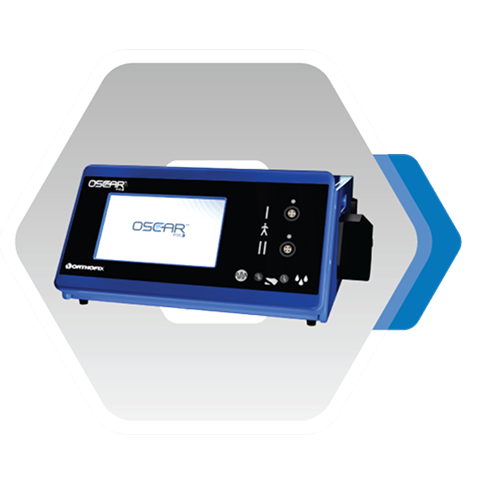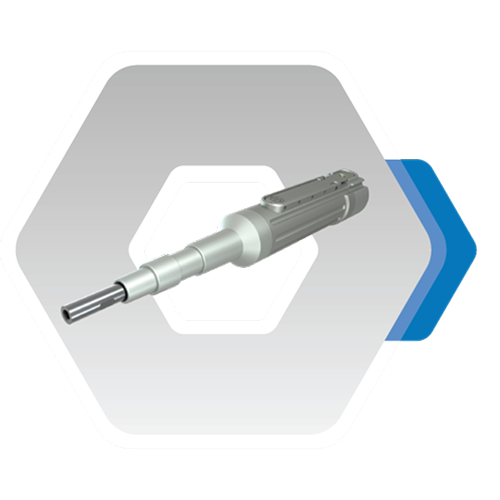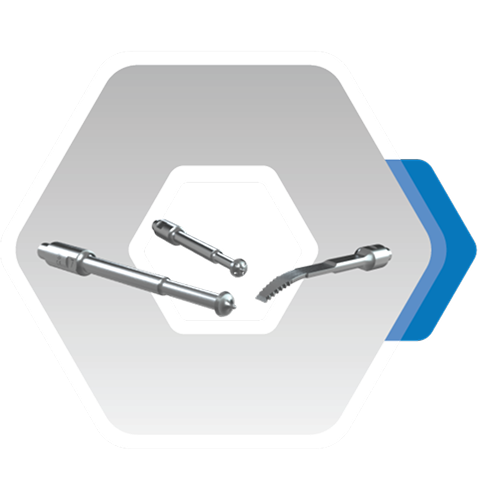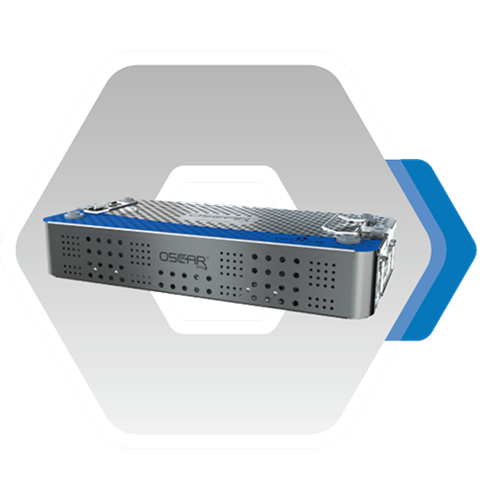PROminence. PROactivity. PROfessionalism. PROgress.
Discover OSCAR PROTM in action with the interactive demo platform
Efficient
Facilitating the removal of bone cement
using ultrasonic energy rather than manual force
Versatile
Extensive portfolio of single use probes, which facilitate the removal of PMMA bone cement in cemented revision arthroplasty procedures,
remove the bone to implant bond in cementless revision arthroplasty procedures or perform osteotomies
PROminence. PROactivity.
PROfessionalism. PROgress.
Oscar Pro™
OSCAR PRO™ is an ultrasonically powered surgical system intended to reduce the challenges associated with revision arthroplasty surgery. The system consists of:
- A mains-powered, portable generator and control unit with a large touch screen display.
- A universal handset connected via a cable encased in silicone rubber to the generator, integrated peristaltic water pump and footswitches.
- A range of single-use probes for cement removal, cementless prosthesis removal and for select osteotomies.
Oscar Pro™
The system will accumulate system data during usage which will be used to analyse the system’s performance and diagnose any possible errors.

GENERATOR
7” multifunctional touchscreen portable mains generator, with microprocessor, multi-language, power control unit and multiple output channels. Integrated wi-fi capability.

HANDSET
Universal handset, piezo-ceramic transducers produce ultrasonic energy at a resonant frequency capable of changing the physical properties of bone cement or cutting bone, it has a Led light to provide appropriate feedback to the surgeon before and during surgery.

SINGLE USE STERILE PROBES
Diverse selection of pre-packed sterile single-use probes, which act as waveguides to deliver ultrasonic energy enabling users to cut and remove bone and acrylic bone cement from lower limb and upper limb arthroplasty revisions. Can also perform osteotomies.

FOCUSED INSTRUMENTATION
Specific instrumentation to allow the OR teams to have greater confidence with theinstruments and with the assembly. In addition, some of the instruments are designed to allow surgeon to have a better ergonomic grip during surgeries. The possibility to use an irrigation kit during surgeries to lower the temperature on the application site.
Enabling access to ultrasonic technology
Supporting your organization’s financial and operational strategy
CAPITAL PURCHASE
Configure your OSCAR System to meet the needs of your clinicians and purchase outright
LEASE
Operating and Capital lease options to spread the cost of owning an entire OSCAR System
LOAN
Hire complete OSCAR Systems as your clinical need demands dictate
TRIAL AND CONVERT
Hire complete OSCAR Systems as your clinical need demands dictate
SERVICING AND WARRANTY
Extensive annual protective maintenance programs to ad-hoc servicing, ensuring that your Oscar System is fully functional
EVOLUTION
OF THE OSCAR SYSTEM
The first generation of OSCAR (OSCAR 1) was launched in 1990 in the UK followed by the USA in 1997.
Today, in the 2021, we’re moving ahead with the 4th generation.

ORTHOFIX
AND THE OSCAR SYSTEM
Orthofix has been involved with the OSCAR product line since 1993,
when it acquired the original company – Orthosonics – and this revolutionary technology.
Orthofix is the proud manufacturer of OSCAR and includes it into its diversified portfolio focused on improving patients’ lives by providing superior reconstruction and regenerative musculoskeletal solutions to physicians worldwide.
The OSCAR portfolio is now widely distributed via Orthofix sales representatives, distributors and subsidiaries.
